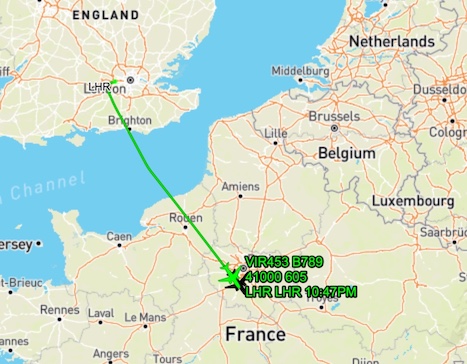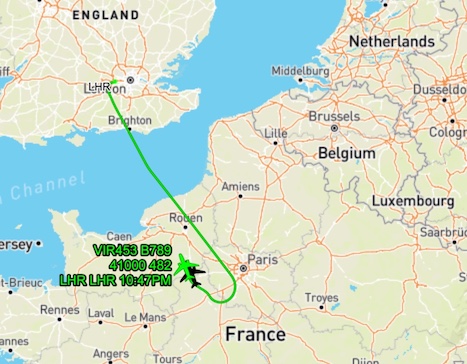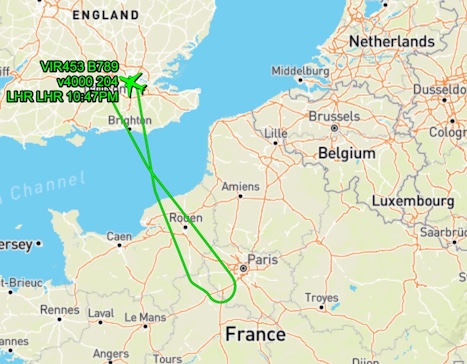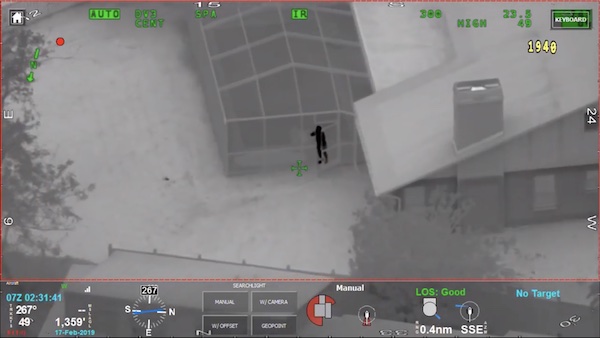Home
A comprehensive resource for safe and responsible laser use
US: Powerful laser claimed to be 5,000 mW aimed at police helicopter in Nashville
The helicopter crew directed ground officers to Cole's apartment, where they found him still holding the laser. He admitted that he had aimed it towards the helicopter.
A news report said it was a "5,000-milliwatt laser, a powerful green military-grade laser with an effective range of 10 miles."

Shannon S. Cole
Cole was charged with two counts of assault and two counts of reckless endangerment.
From News4 Nashville
COMMENTARY FROM LASERPOINTERSAFETY.COM
A 5,000 milliwatt laser (5 watts) is relatively rare for a handheld, battery-powered device. It may be that the laser label or marketing documentation claims it is 5,000 milliwatts. But this may have been inflated for marketing purposes. Our educated guess is that the laser is probably lower powered such as 1-2 watts (1000-2000 mW).
The takeaway point is that the claimed wattage of a laser is often very different from the actual output wattage. We are not aware of any police departments with the equipment and expertise to measure the actual output power of a laser.
Also, the term "military-grade" is an imprecise term with no established meaning. Military units may use handheld battery-powered lasers in the 5 watt range, but often these have additional features such as lenses to spread out the beam for dazzling persons coming to checkpoints. A 5 watt handheld battery-powered laser can be an eye hazard (hence the additional lenses to safely spread the beam) but for offensive purposes it would not be effective to say, burn skin or damage objects.
Finally, whether the laser has an "effective rage of 10 miles" depends on what effect is desired, or is to be guarded against. The news story did not indicate specifics, but here are some safety distances for a 5 watt, 532 nanometer (green) laser with a tight beam divergence (spread) of 1 milliradian.
Direct exposure to the beam can start to cause minor but detectable eye injuries at around 500 feet. Laser safety experts say a person should be 1,640 feet or further away from such a laser in order to have a "vanishingly small chance" of an eye injury. (E.g., the Nominal Ocular Hazard Distance is 1,640 feet.)
A 5W laser could cause temporary flashblindness to about 1.5 miles; the viewer would have an afterimage that would fade, similar to after a camera's flash goes off. The laser light creates veiling glare to about 6.6 miles meaning that a viewer could not see past the laser light while it was in their eyes, but could see when the beam moved off their eyed. And, the laser light is considered a distraction to 65.6 miles, meaning that the light would be brighter to a pilot than city or airport lights.
UK: Virgin Atlantic flight turns back after laser strike
"On 15 March 2021 flight VS453, operating from London Heathrow to Tel Aviv Ben Gurion Airport, returned to Heathrow after take-off due to a laser beam incident upon departure.
The safety and security of our people and our customers is paramount and this was a precautionary step taken by the operating crew.
We'd like to thank our customers for their patience and apologise for any inconvenience caused.
All customers were offered overnight accommodation and we are working hard to ensure they are able to continue their journeys as soon as possible.
As is standard procedure for a laser incident, we swiftly notified the police and remain in close contact with them and the Civil Aviation Authority (CAA)."
The Boeing Dreamliner B789 aircraft took off from Heathrow at 9:34 pm GMT. At about 10:00 pm, while flying at an altitude of 41,000 ft, it began a U-turn southwest of Paris. The flight landed back at Heathrow at 10:47 pm.

Approximately 10:00 pm the aircraft begins its U-turn
A few minutes later, it is on its way back to Heathrow…
… landing at 10:47 pm.
According to the Aviation Herald, the pilot was climbing out of Heathrow when the captain was illuminated by a laser beam. His or her condition worsened, with vision in only one eye, so the crew decided to turn back. They declared a "pan-pan", which is an urgent situation not posing an immediate danger. (This call is one level down from a "mayday", meaning imminent danger to life or the aircraft.)
The Aviation Herald also cited an Israeli media report that the laser perpetrator had been arrested.
From the Aviation Herald and the Daily Mail. Graphics from FlightAware.com
COMMENTARY BY LASERPOINTERSAFETY.COM
This is the second time we are aware of that a commercial flight has turned back after having laser light from the ground interfere with the crew. On February 14 2016, a Virgin Atlantic flight from Heathrow to New York was illuminated by green laser light 6 miles west of London while flying at 8,000 feet. That flight continued for a while but then turned back over Ireland due to the first officer having vision problems. A story with links is here.
We have also reported on a few other times that aircraft have changed course, or the many times that police or other public service flights have had a mission interrupted, because of laser interference.
US: Pilot has eye problems after laser aimed at California police aircraft
CHP pilot Jan Sears was directly illuminated by the blue laser beam. He later described the effect: "So it's pitch black and we're flying and all of a sudden it's like the sun just came out. It took me a minute to get my bearings…." Sears was able to control the aircraft by activating the autopilot. The CHP flight officer directed deputies on the ground to the suspect's location.
He was identified as Christopher Larsen, 33. He was charged with two state felonies for discharging a laser and aiming a laser at an aircraft, and may also be charged with a federal felony.

Christopher Larsen
Sears said Larsen was "using a laser that's illegal, much more expensive and highly powerful." He noted that "In a week we are lased once maybe twice; sometimes we catch them, sometimes we don't."

A laser similar in design to the one Larson was found with
Sears told NBC Bay Area that he was "still having residual effects with my left eye. I feel that something has happened." He said he had experience with green lasers before, but "this was a blue laser. It was the worst type to get involved with." Protective eyewear was on board, but it was intended to reduce green light, not blue.
From CBS San Francisco Bay Area, GoodDay Sacramento, KSRO and NBC Bay Area
Commentary from LaserPointerSafety.com: Most lasing incidents involve green light, so glasses that reduce the intensity of green light can be useful. Glasses are available which reduce green and blue — and even green, blue and red. However, the more wavelengths of light that the glasses attenuate, the more overall light is also dimmed. Plus this can make it more difficult to differentiate colors on the aircraft instrument panel. More information is on the page about laser glare protection eyewear.
US: WestJet pilot is said to have eyes "burned" at 10,000 feet
The flight continued to Orlando's airport and landed about 15 minutes after the incident.
At FAA's request, the Volusia County Sheriff's Office was asked to investigate a possible location for the laser. Deputies found a house with a bright green porch light, but the residents said they did not own a laser pointer.
The pilot was referred for medical examination, as per WestJet's standard operating procedure.
WestJet released a statement: "Laser incidents pose a serious concern to crew and aircraft safety and have serious repercussions for those found to be shining lasers in a manner that could result in injury or damage. These incidents are reported immediately to local authorities for further investigation. Pilots are extremely focused during all phases of flight, but especially during take-off and landing, when most laser incidents occur. When any sort of light enters the flight deck, pilots are trained to look away and maintain focus but they must also maintain vigilant with respect to their surroundings and monitor the apron prior to landing. Pilots take on an incredible responsibility controlling an aircraft, and it is WestJet’s duty to ensure a safe work environment for them to operate in. Any pilot who reports being struck by a laser is required for safety and health reasons to have an ophthalmology evaluation."
From the Aviation Voice, WESH.com, News965.com, and ClickOrlando.com
COMMENTARY FROM LASERPOINTERSAFETY.COM
It is almost a certainty that the pilot's eyes were not burned by the laser exposure. A laser beam that traveled 10,000 feet would have to be extraordinarily powerful to even potentially cause an eye injury.
Laser beams spread out with distance. At 10,000 feet a laser beam would expand to be at least three feet wide. Only a fraction of the beam power would go through the pupil of the pilot's eye. (In fact, of the original laser irradiance, only 0.003 percent would go through the pilot's pupil.)
What power would it take? A 190 watt laser with a very narrow 1 milliradian beam has a Nominal Ocular Hazard Distance of about 10,000 feet. This means the laser light is generally considered safe after the NOHD distance. This does not mean that just inside the NOHD there would be an injury. Laser safety standards have a built in "safety factor" or "reduction factor."
To have a 50/50 chance of causing the smallest medically detectable eye injury at a distance of 10,000 feet, the laser would have to be about 1,900 watts at a 1 mrad divergence.
By comparison, the most powerful handheld lasers currently available are in the 3 watt range with claimed wattage (not confirmed) up to about 6 watts. Most laser pointers used in incidents are less than 1 watt.
It may be that someone aimed a non-handheld, plug-in-the-wall laser beam at the pilot. Even here, 190 to 1,900 watts is fairly powerful. There are some industrial and research lasers much more powerful than this, but to the best of our knowledge the only non-handheld lasers involved in aircraft lasings have been from laser light shows. For such shows, 60 to 80 watts is about the most powerful from a single laser source. There were no reported outdoor laser light shows the night of the WestJet incident.
Some news articles gave an impression that, because the pilot's eyes were burned, he or she went for a medical examination. But as explained above, this is routine policy. WestJet requires "any pilot who reports being struck by a laser … to have an ophthalmology evaluation."
It could be that the pilot had an eye effect, such as irritation from the bright flash of light, or that the pilot rubbed his or her eyes so hard that they scratched their cornea — a painful condition which heals.
For more information
More information about laser eye effects on pilots is here. A quick summary is that 1) there have been no proven or documented eye injuries to pilots according to U.S. FAA, U.K. CAA and Transport Canada, and 2) top laser safety experts have written that "There is no evidence to suggest that lasers pointed at airplane cockpits damage pilots’ eyesight."
A table listing eye effects and incidents reported to U.S. FAA in past years is on the laser/aircraft illumination statistics page.
US: Florida man ignores laser label, aims it at aircraft anyway
On February 17 2019, the helicopter was monitoring a fire at about 2:30 am when a red beam was shined at the aircraft three times. An infrared camera captured a suspect aiming towards the helicopter from the door of a screened-in porch.

Deputies on the ground went to a house in unincorporated Clearwater and arrested Brian Harting, who admitted aiming a laser at the aircraft.

Brian Harting
Harting also said he was unaware that doing so was illegal. The laser had a label stating "Never aim at aircraft."
From the Miami Herald and WFLA
Commentary from LaserPointerSafety.com: As far as we are aware, this is the first case where a person was apprehended with a laser that had a label warning against aiming at aircraft. Such a warning is not required in the U.S., as the Food and Drug Administration only requires labels that warn against injury to eyes or skin, or a potential burn hazard. FDA does recommend that laser pointer manufacturers add a a warning against aiming at aircraft, but this is not legally required.
Such a label has two advantages: 1) It can warn persons who read the label, and 2) it is easier to prosecute a person in court if they were specifically warned on the laser not to aim at aircraft, but they did so anyway. More discussion is on the page "What should be done about laser pointers?" in the two sections with labeling recommendations.
US & East China Sea: US officials say lasers have targeted military pilots in the East China Sea
U.S. officials said the low-level, harassing beams came from fishing vessels and from shore.
U.S. and Chinese military interests have had disputes in the East China Sea in recent years. However, there was no specific indication of whether there was malicious intent, or any organized effort behind the laser incidents. The officials speculated that the lasers could be directed by the Chinese government, or could be “disgruntled Chinese fishermen… who simply want to harass American pilots.”

A spokesperson for the U.S. Indo-Pacific Command said that flying procedures have not changed due to the laser incidents. She did say pilots are “employing” required laser eye protection.
A spokesperson for the Chinese Foreign Ministry called claims that China was responsible for the East China Sea lasers “groundless and sheer fabrications.”
According to news.com.au, “All aspects of the Chinese economy are state-controlled. And its fishing fleets are operated as a militia, working in close concert with Beijing’s navy as it seeks to assert its arbitrary claim to total control of the South and East China Seas…. The waterway is, however, part of a busy sea lane carrying enormous quantities of international trade.”
Disclosure of the East China Sea incidents came about seven weeks after the United States publicly accused China of deliberately aiming lasers between two and ten times at military aircraft in Djibouti, in East Africa. In those incidents, the Pentagon said “military-grade” lasers were used. Two U.S. Air Force pilots received minor, unspecified injuries with no long-term effects.
From the Wall Street Journal, news.com.au and Stars and Stripes
Commentary from LaserPointerSafety.com: About 24 laser/aircraft incidents over nine months from boats or the shore of the East China Sea seems like a plausible number for random, unconnected civilian misuse of commonly available laser pointers.
Consider that the East China Sea has an area of about 500,000,000 square miles. This is roughly equivalent to the combined area of Texas, California and Florida. (Of course the Sea is far less populated even considering seacoast populations.)
In the U.S. in 2017, there were roughly 5,600 reported incidents over nine months, so 24 incidents in the same period is a reasonable number for a less-populated area. Another indication that these may be from civilian misuse is that U.S. officials indicated the East China Sea incidents occurred from “smaller, commercial-grade” lasers which includes readily available low-powered consumer laser pointers.
However, if Chinese fishing fleets are a “militia” as claimed by one news source, then there may be some coordination or central control for the laser attacks.
For a contrary view, see the June 25 2018 column “China is Trying to Bring Down American Planes With Lasers. Time to Get Tough” in the Daily Beast. Author Gordon Chang considers but rejects the unorganized attack hypothesis. He says “it is difficult to believe that Chinese fishermen can pick out American military aircraft from civilian ones without radar or other help. Moreover, state support is the best explanation for the increasing sophistication of the laserings.”
Chang argues that “Washington should consider the attacks, almost certainly directed by Beijing, as attempts to injure pilots and their crews. The American response, therefore, should be immediate in timing and devastating in effect….”
US: Florida man arrested for aiming at sheriff's office helicopter
The aircraft was searching for a missing child at the time. The pilot and tactical flight officer were illuminated five times by the laser. It affected their ability to see and to give updated locations of the child, whom they had spotted shortly before the laser strikes.
Eric D. Harper was arrested at his home. Harper admitted to aiming at the aircraft. He told the arresting officers that he was sorry and he was unaware aiming a laser at an aircraft was illegal.

Eric D. Harper
From the Tampa Bay Times and ABC Action News
Note from LaserPointerSafety.com: Both stories quoted the sheriff’s office as saying that viewing a laser from infrared equipment such as FLIR cameras can severely damage the human eye.” This is not true. The laser may cause the FLIR viewing screen to “bloom” to full white or full green, which is very bright and of course can interfere with vision. The laser might even damage the FLIR sensor. But the FLIR sensor stops the laser beam itself — no laser light can enter the eye, and thus no eye damage could occur.
UK: UPDATED - Flight returns to airport after pilot gets laser in eyes, reports medical emergency
Virgin’s website stated that “Following this incident the first officer reported feeling unwell. The decision was taken by both pilots to return to Heathrow rather than continue the transatlantic crossing."
The airline said passengers would stay overnight and would then be able to fly to JFK Airport “as soon as possible”.
Police were attempting to find the laser source, said to be 6-7 miles from the airport. An article in the Daily Mail included a map showing the aircraft’s takeoff pattern, and the area where the laser beam was thought to have originated.
From the Telegraph, Daily Mail, BBC News and ITV. Audio recording from AirportWebcams.net.
UPDATED February 15 2016: The British Airline Pilots’ Association (BALPA) called for “the Government to classify lasers as offensive weapons which would give the police more power to arrest people for possessing them if they had no good reason to have them.” From a statement on BALPA’s website, reprinted here.
UPDATED February 17 2017: A forum post claiming to be from the Virgin Atlantic pilot gave details about the incident. The person posted under the handle “scroggs”. He wrote: “I am the Captain in this event…. It was a red beam, not a green one. It was indeed reported as and when it happened. The pictures we got show its ground position (which wasn’t Legoland as far as I can see), and will hopefully help those in the know to estimate its power and provenance.”
Scroggs continued: “As was reported in the news, the FO did receive retinal damage from what appeared to be a 'lucky' passing sweep, but it's not permanent and will heal fully. There was no visual impairment during the flight, but there was no way of knowing (for me) that that would continue to be the case. The symptoms were slow in making themselves apparent. That's about all I'm prepared to say for now.” From post #173 in a thread on PPRuNE.org about the incident.
Background commentary from LaserPointerSafety.com
After around 40,000 laser incidents reported to U.S. FAA and U.K. CAA from 2004 through 2015*, as of February 14 2016 this is the first occurrence we are aware of where a commercial aircraft has turned around and not completed its flight, due to a laser incident from the ground.
- There have been a few instances where a flight has changed course, such as pilot doing a “go around” on landing because of laser light on the first attempt.
- Some police and rescue operations have had their missions disrupted by a laser; this has been common for the U.S. Coast Guard which has operational rules requiring a mission to abort if there is laser illumination.
- In 2013, there was an incident where an aircraft made an emergency diversion 224 miles short of its destination, because a passenger onboard was using a homemade laser to burn several small holes in fabric near his seat. This is the only other emergency diversion we are aware of due to laser misuse.
As of February 14 2016, there is no confirmed, documented case of permanent eye injury to a civilian pilot (commercial, general aviation, or police/rescue) due to exposure in the cockpit to laser light from the ground.
In a fall 2014 case, first publicly reported about a year later, a British Airways pilot illuminated by a laser on landing at Heathrow was treated at a Sheffield hospital for spots on his retina. The case was reported in a medical journal in January 2016 which said the area had healed within two weeks. An expert close to the case, who directly examined the journal paper and the evidence, told LaserPointerSafety.com in February that he does not believe the retinal injury was laser-induced, and that it was “not confirmed” as a laser injury “despite what the journal paper says.”
*29,097 laser incidents reported to U.S. FAA, Jan 1 2004 through Dec 31 2015; plus “more than 8,998 laser incidents” reported to U.K. CAA “between 2009 and June 2015.”
UK: (Not a laser) Drone slices toddler's eye in half
The accident happened in mid-October, in Stouerport, North Westchestershire. Simon Evans, next door neighbor to the family, had prior experience operating drones. Oscar was in his family’s front yard when after about 60 seconds of flight, Evans’ drone hit a tree, went out of control, and sliced through the toddler’s eye. The BBC quoted his mother, Amy Roberts, as saying “What I saw was what I thought was the bottom half of his eye, and it's the worst thing I've ever seen."
From the Telegraph and Ars Technica
Analysis and commentary from LaserPointerSafety.com
Although this severe accident did not involve lasers, there are some comparisons and contrasts with consumer laser pointer eye injuries. In almost all cases, a consumer laser injury does not cause complete loss of vision. It certainly does not result in exterior damage or destruction of the entire eyeball. On the other hand, drone injuries are rare, with only a few cases of persons being injured by falling drones. This is the only drone eye injury we are aware of, while there are a number of laser pointer eye injuries, some of which are in lists here and here.
UK: UPDATED - "Military-strength" laser injures retina of pilot landing at Heathrow
McAuslan said the identity of the person, who was acting as co-pilot at the time of the incident and thus was not operating the aircraft, could not be revealed at present due to it being reviewed by an “employment tribunal.” British Airways said they are investigating the claimed injury.
McAuslan said that “kids’” lasers could not cause injury but that laser weapons could now be purchased illegally. [Lasers over 1 milliwatt in power are not legal for sale to the general public in Britain.] He said “We’re very concerned about it. When something as strong as this comes on the scene it starts to worry us.”
BALPA is also concerned over a survey of its pilot members, showing that 50% had reported a laser/aircraft incident during the period from November 2014 to November 2015.
According to the U.K. Civil Aviation Authority, there have been about 4-5 laser incidents reported each day on average, over the past four years. From January 1 to June 30 2015, there were more than 400 laser incidents reported to CAA.
From the Guardian, the Express, the Evening Standard, and the Belfast Telegraph
UPDATED - April 20 2016: Significant doubt has been cast on whether the eye damage was caused by a laser. In January 2016, a medical journal report was published by two ophthalmologists and a laser safety regulator. The report stated that there was no long-term negative effect on vision: “The pilot’s symptoms fully resolved 2 wk later.”
In February 2016 a very knowledgeable expert, who directly reviewed all evidence in the case, told LaserPointerSafety.com he “doesn’t believe it was laser-induced” and that the injury being caused by a laser was “not confirmed, despite what the journal paper says.”
This is confirmed by an April 2016 editorial written by three leading U.K. laser safety experts — including the laser safety regulator who co-authored the January 2016 medical journal report. The experts concluded the case is suspect for a number of reasons; they do not believe laser targeting caused the alleged injury. They wrote: “Only one case of alleged retinal damage to a pilot resulting from laser targeting of aircraft has been reported, although not in a peer review ophthalmic journal. This case is suspect because first and foremost, the metrology and exposure geometry would suggest insufficient energy could have entered the eye to produce irreversible damage and second the fundus anomaly is in the wrong location, the wrong shape and resulted in an extremely transient reported loss of VA [visual acuity] with full recovery.”
Analysis and commentary by LaserPointerSafety.com
If the pilot’s injury was caused by the laser exposure, this would have been the first documented case of a permanent laser eye injury to a civilian pilot. It would also have been the first case where a civilian pilot was unable to continue to be qualified to fly, due to laser exposure while in an aircraft.
There may be military cases of laser eye injury but if so, these would likely be classified and thus not be known to LaserPointerSafety.com. (There was a 1997 case of a military observer who had a claimed eye injury which was later found by laser injury experts to be not caused by his laser exposure.)
US: UPDATED - 3 pilots go for eye treatment after multiple LaGuardia laser illuminations
On the evening of March 9, the Federal Aviation Administration notified the New York Police Department aviation department that someone was pointing laser beams at aircraft landing and taking off from LaGuardia Airport. A helicopter was dispatched to try and “draw fire.” Nothing happened for about 20 minutes, until the helicopter flew a path similar to an aircraft landing approach. On the second pass, a laser was aimed at the helicopter.
Both pilots were hit. Said one, “You feel a strong tingle in your eyes. You have a burnt spot where you can’t see. It is very dangerous for any pilot to be blinded.”
Ground officers went to the apartment of Frank Egan, 36. His mother invited the officers inside, where they found a device labeled “Laser 303.” According to police, Egan admitted using the laser pointer. He said it was purchased for $50 in an Orlando shop while on vacation.
He was charged with assault on a police officer, felony assault, menacing a police officer, reckless endangerment, and criminal possession of a weapon.
The next day, March 10, Egan told reporters that he did not aim the beam and that he was sleeping at the time of the incident.
From NBC 4 New York, the New York Post and the New York Times
UPDATED March 14 2015: Frank Egan’s roommate and brother-in-law, Elehecer Balaguer, 54, claimed that he was the one using the laser pointer. According to the New York Times, Balaguer swore an oath in New York State Supreme Court on March 13 2015 that he, not Egan, was responsible: “Frank had nothing to do with it. I was the one that did it. It was just a kid thing. It was a stupid thing to do.” Balaguer first denied aiming at aircraft, then after being asked two more times, confessed “I pointed it at the plane, yes, thinking it was a …” and his voice trailed off. He then said “But I didn’t mean to hurt anybody.” According to Egan’s lawyer, Egan never told the police he used the laser, contrary to the police statement after Egan’s arrest. From the New York Times. A related article in the New York Times published March 12 2015 was entitled “Powerful Lasers Easy to Buy, Experts Say.” The New York Post called the laser “military-grade” and said it had been purchased while on vacation in Orlando.

Elehecer Balaguer in court
UPDATED March 17 2015: Balaguer was charged on March 16 2015 in federal court with aiming a laser pointer at an aircraft. This has a maximum penalty of five years in prison and a $250,000 fine. FAA officials said they had to redirect traffic in and out of LaGuardia on March 9 to avoid going over the Bronx, where Balaguer and Egan lived. Balaguer’s attorney said the suspect “uses methadone every day and takes medication for bipolar disorder”, and that he was “harmless”: “It was stupidity, not venality.” From the Wall Street Journal.
UPDATED May 5 2015: Balaguer pleaded guilty in U.S. District Court to aiming a laser pointer at an aircraft. He could face up to five years in prison. The judge said sentencing guidelines call for between 2 and 2 1/2 years. He said sentencing of Balauger would not be routine “Given his psychiatric history, given his apparent lack of any wrongful intent, I can see one set of arguments being made; on the other hand I can see a different set of arguments because of the danger presented,” said the judge. Sentencing was scheduled for September 9 2015. According to the New York Post, Balaguer is a disabled ex-heroin dealer who has a history of schizophrenia and left school after ninth grade. From CBS New York, the New York Post, and the New York Times.
UPDATED April 19 2019: Frank Egan received a $227,500 settlement from New York City. His lawsuit said police had falsely claimed that Egan had admitted to owning the laser found during the arrest. Egan said his picture was widely spread in the media, his reputation had suffered, and his wedding and honeymoon were disrupted by the arrest. A Law Department spokesman said "…it was in the city's best interest to settle this case." From the New York Daily News.
Canada: UPDATED - Pilots suffer itching, irritation from laser strike while landing in Ottawa
The incident occurred September 23 2014. The laser was pointed at the plane for around 2-4 minutes. Police are looking for the perpetrator.
Earlier in the month, on September 5, a Porter Airlines flight from Toronto was flashed with a green laser as it approached the Ottawa runway, according to CBC News.
A WestJet spokesperson said the pilots were cleared to fly and there was no permanent damage: “... there are real health repercussions for being exposed to a laser beam, so we do have a protocol in place where they will get checked out and there is also follow-ups.”
Click to read more...